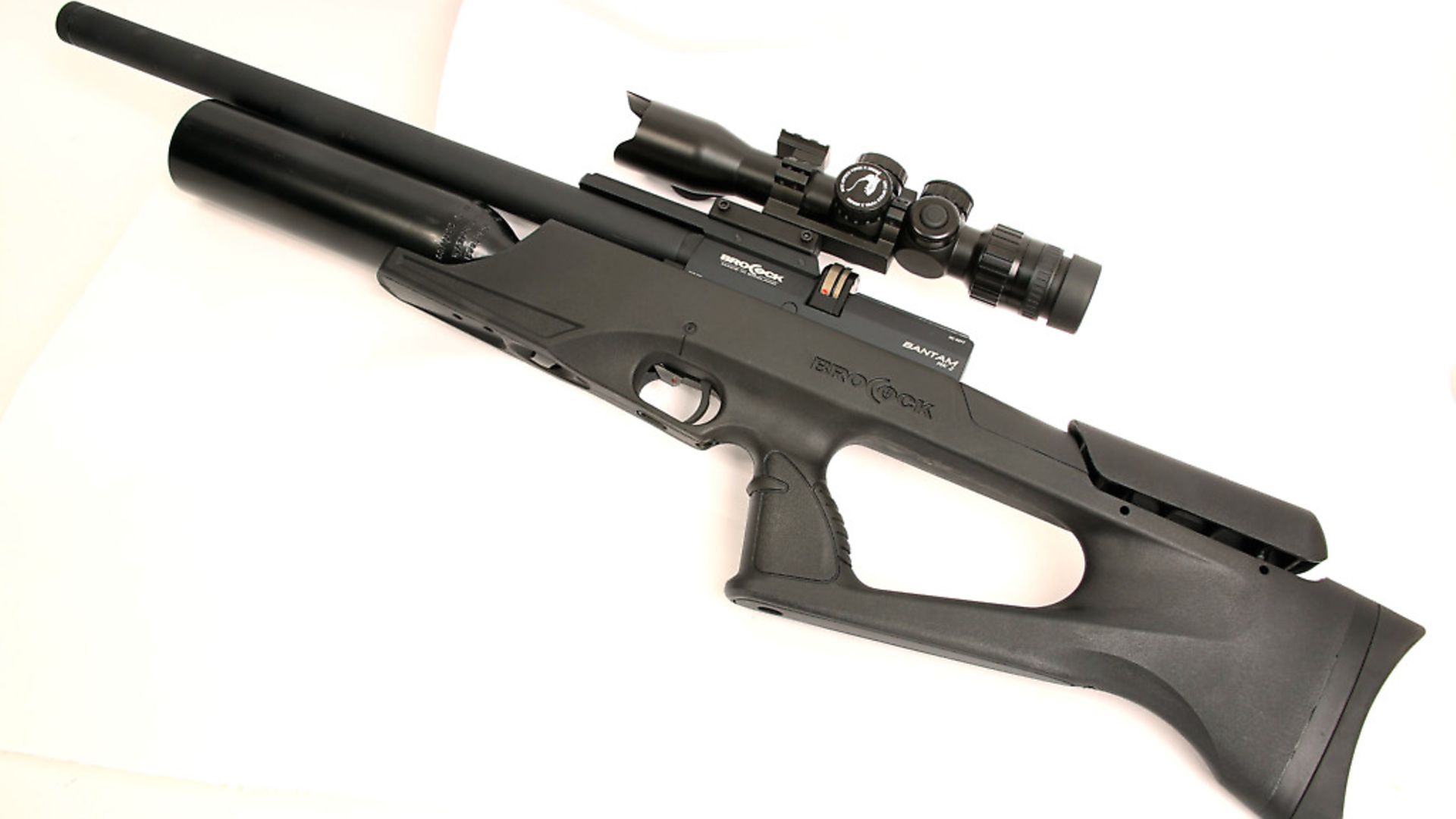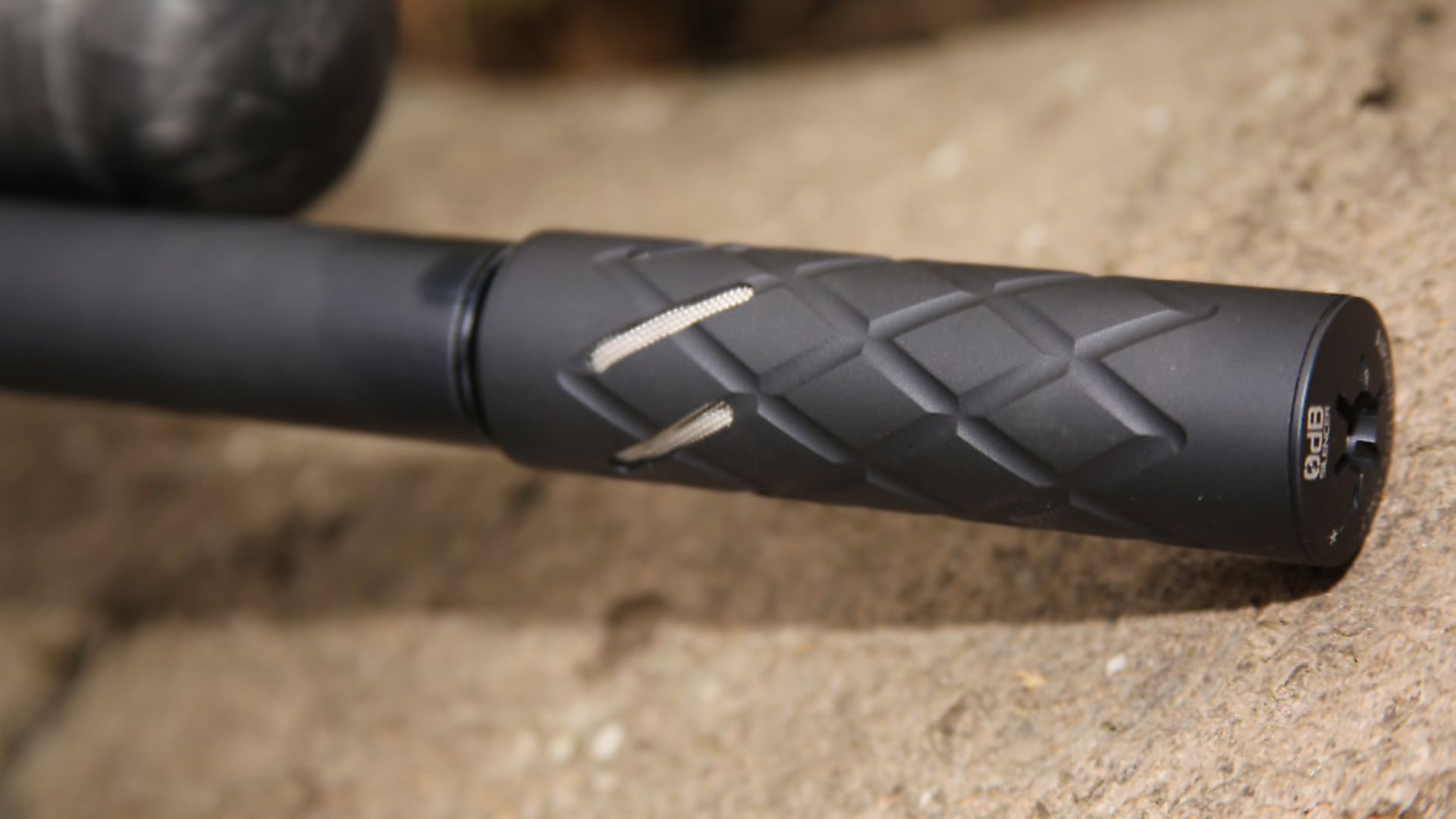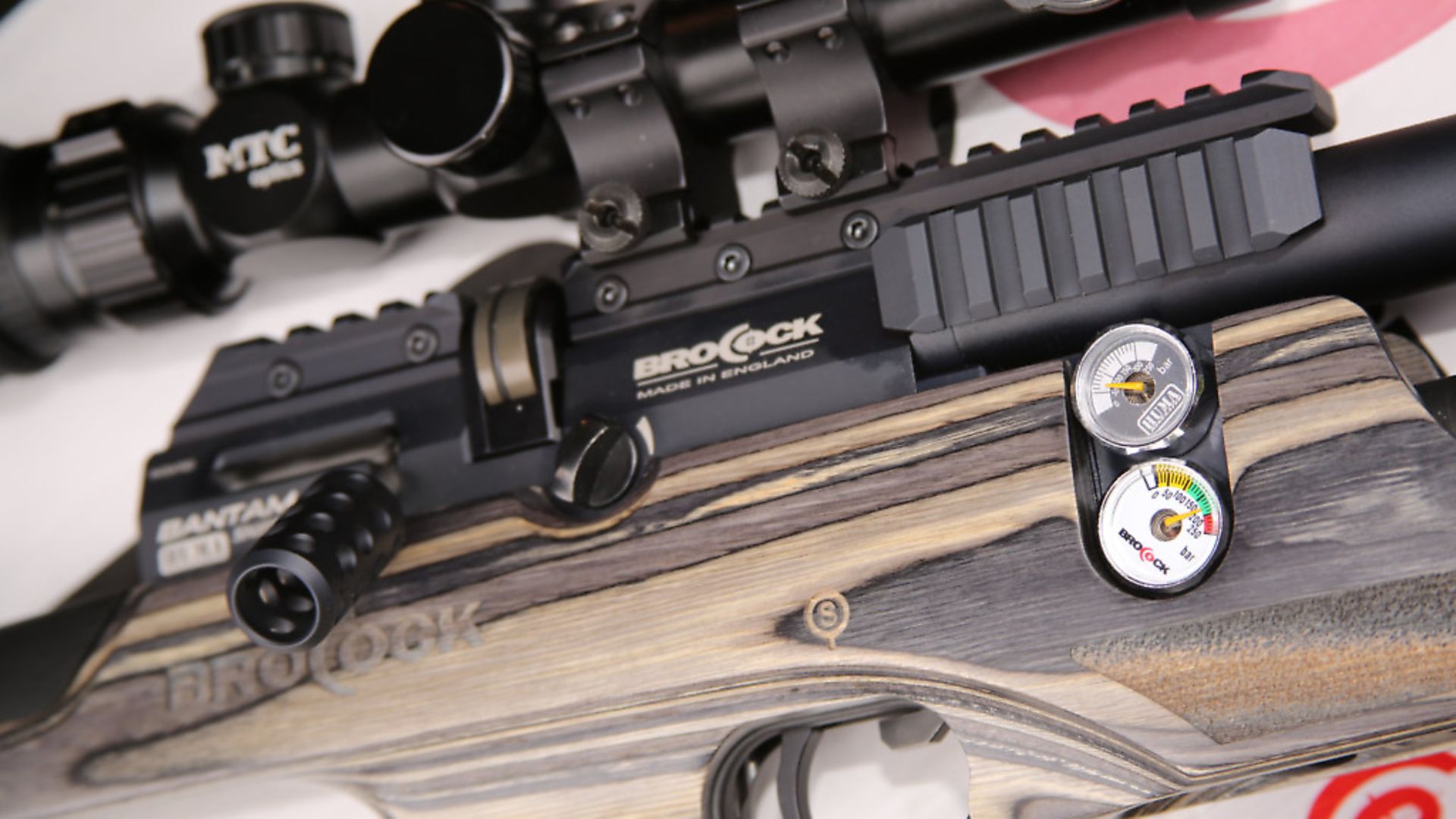The editor confesses to a shameful affliction and evaluates some add-ons
 credit: Archant
credit: Archant
Read Terry Doe's first review of the Brocock Bantam MKII & Sniper HR here.
By the close of last month's Editor's Test, I'd turned my back on my shooting roots and the simple philosophy which has sustained me throughout my shooting life. I'd committed this dreadful sin by opting for the Brocock MKII Sniper HR, rather than the perfectly practical but far less fancy standard MKII, and I still haven't summoned the decency to be even slightly embarrassed by it.
After that first test, I locked the 'unchosen' Bantam in my gun safe, grabbed its designer stablemate, and headed for a new permission I've acquired not 10 minutes' drive from my home. Brocock had given me permission to do whatever I felt necessary to test the Bantam HR to its limit, including leaving it out in the rain, getting it caked with mud, and dragging it through any amount of bramble, briar and hostile foliage.
Terry the tart
Sadly, it appears that my transformation to airgun tart is complete, because, apart from getting caught in the rain for an hour, I couldn't bring myself to inflict any such punishment on the test rifle. Yes, I shot it hard, let inexperienced shooters crank it about a bit, and took it camping for a couple of sessions, but I looked after it, like I do my own rifles. The test rifle wasn't wrapped in cotton wool by any means, but I didn't deliberately torture it, just to see how much abuse it could take. Let's get that straight, OK?
As promised last month, my follow-up testing regimen was based on evaluating the optional extras and differences that combine to turn the basic Bantam MKII into the Sniper HR. In no particular order, here goes.
 credit: Archant
credit: Archant
Regulated performance
In sub-12 mode, you're getting hundreds of shots per charge, and the MKII will put its pellets inside 20mm or less at all real-world hunting ranges, regulator or not. Unless you're an absolute efficiency freak, or a trophy-hungry competition shooter, or your intended Bantam is a high-power, FAC-rated model, I believe the Huma regulator, as impressive as it is, offers no practical advantage. If you prefer to keep things uncomplicated at sub-12, I'd advise you to spend your 'extra' money on something other than a regulator.
The 0dB silencer
This isn't a cheap add-on, but it works extremely well and if you're going to add a silencer, and I think you should, then get one that performs at least as well as the 0dB, preferably of a design that looks at home on the Bantam's fully-shrouded barrel, without sticking too far beyond the threaded muzzle.
 credit: Archant
credit: Archant
The Picatinny scope rail
As far as providing a platform upon which to mount a scope, no PCP rifle needs something as 'belt 'n' braces' robust as a Picatinny system. Standard dovetails will provide all the clamping power you'll ever need … but ... perhaps it's part of new tarty mentality, but the Picatinny just looks right on the Bantam MKII, especially if you also opt for the side rails, all of which are Picatinny format. Yes, I'd go for this 'extra'.
The Alpha bipod
I'm not a bipod type of shooter, but if you are, then the Alpha makes all sorts of good sense. The legs extend and retract via a spring-loaded collar, and their length is set in clearly defined notched stages. Those legs are deployed by pressing a button and they can be returned either facing forward or back, whilst the whole bipod can be removed or replaced courtesy of a spring release and cam-lock lever which mates to a Picatinny rail beneath the Bantam's fore end. The Alpha is a high-quality item and if bipods are your thing, you'll need to think about owning one.
The FAC variation
A good friend of mine has a high-power Bantam Sniper HR in .25 calibre, set at 40 ft.lbs. as his main crow and rabbit rifle, and I've used it on three occasions. I can see why he's using it in place of his .22 rimfire, too, particularly around the horse paddocks he looks after. That Bantam is exactly the right amount of rifle for that job, whereas the rimfire could occasionally be 'too much gun', especially when the ground is hard.
My friend is a fairly recent convert to air power - for which I am entirely to blame - and like most new adopters, he's gone all evangelical and he'll bore the brains out of anyone who'll listen to him preach about his Bantam. He's right, though, and if you either have or are considering moving to FAC-rated hunting, this MKII is right up there with the best of them.
Overall verdict
Just because I've become a raving tart, it doesn't mean that you have to be similarly afflicted. The standard Brocock Bantam MKII will do everything required by the vast majority of airgun hunters. The groups I shot with each rifle were distinguished, but indistinguishable. The ambidextrous synthetic stock of the standard rifle handles every bit as well as the Sniper HR's laminated offering, and the triggers and magazine systems are identical, too. Pure, practical performance can't split these rifles, so it's down to personal preference, at least in sub-12 mode.
Our rifles are personal pieces of kit, as much as the 'it's just a tool for a job' shooters will protest, and that's where you need to allocate your priorities and your cash. I'd go for the Sniper HR, with a Picatinny scope rail and OdB silencer, and reconsider further options as their need presents, but other airgunners will certainly choose their own way.
The one common factor that has emerged from this double test is far more important than my tragic decline into tartism, though. The real deal is, Brocock rifles are now sitting at the top table with every big hitter out there. These are serious rifles and they deserve equally serious consideration.
Specification
Model: Bantam MKII standard and Bantam MKII Sniper HR
Manufacturer: Brocock
Country of origin: UK (Sniper stock produced in Italy)
Price: £849 for the standard MKII, £1,199 for the Sniper HR incl. 480cc carbon bottle
Type: Pre-charged, multi-shot, semi-bullpup sporters
Calibre: .22, .177, .25
Cocking/loading: Bolt-action, via removable, rotary, 10-shot magazine, or supplied single-shot tray
Trigger: 2-stage, adjustable, with manual, resettable safety
Stock type: Ambidextrous synthetic on the standard model, laminate on the Sniper HR, both with height-adjustable cheek piece and butt pad
Weight: 3.2kg (7lbs)
Length: 880mm (34.6ins)
Barrel: 430mm (17ins)
Fill pressure: Max 250 bar (designated pressure stated on each rifle)
Shots per charge: Sniper HR as tested, 520 in .22, 410 in .177 at sub-12 ft.lbs. configuration. Standard version 280 in .22, 250 in .177. Hi-power versions available.
Average energy: 11.6 ft.lbs. up to 46 ft.lbs. in .25 FAC
Optional extras: Picatinny scope rail, £59, Picatinny under rail, £29, dual siderail, £49, OdB Piccolo Silencer, £99, Alpha bipod, £80.
Contact: Daystate on daystate.com.
Read the first review of the Brocock Bantam MKII & Sniper HR here.